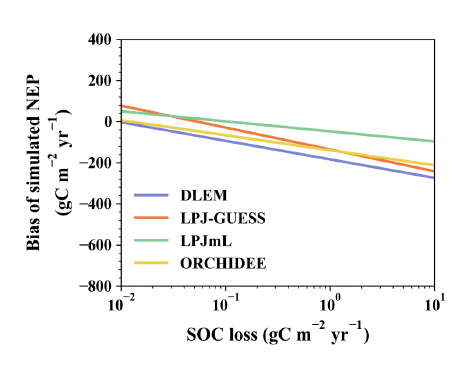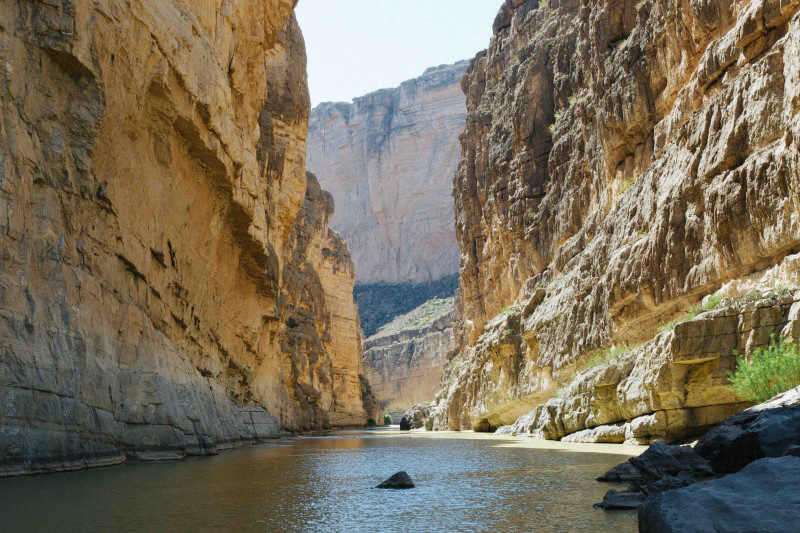Including Soil Erosion in Global Models of the Carbon Cycle
Earth system models that ignore soil erosion are unlikely to realistically predict future land carbon storage.
The Science
How well Earth system models represent carbon-climate feedbacks is critically connected to their projections of future Earth system changes. However, carbon-climate feedbacks quantified by these models currently have significant uncertainties because the models only consider a few of the biogeochemical processes that move carbon through the land, oceans, and atmosphere. A new study led by scientists at the U.S. Department of Energy’s Pacific Northwest National Laboratory highlights the substantial role of soil erosion in the carbon cycle simulated by Earth system models. The researchers found that ignoring soil erosion-induced carbon loss in common Earth system models biases predictions of future carbon absorption on land. The biases are due to the implicit increase of the amount of carbon released by decomposing organic matter to compensate for ignoring the erosional carbon loss.
The Impact
Previous efforts to improve modeling of carbon-climate feedbacks have focused mainly on modeling vegetation dynamics that determine the structure and functional composition of ecosystems and the nutrient cycle. This study indicates that without representing soil erosion, Earth system models are less likely to make realistic predictions of future carbon stored by land. Furthermore, simply coupling soil erosion models with Earth system models without representing the complex impact of soil erosion on land biogeochemistry produces uncertain estimates of erosion-induced land carbon changes.
Summary
Carbon around the world is continuously cycled within and between different components of the Earth system, such as atmosphere, land, inland waters, and oceans. However, carbon cycling in Earth system models is represented by processes mainly associated with carbon dynamics in land and oceans, and carbon fluxes between land/oceans and atmosphere. It is unclear whether these simplified models of carbon cycling can realistically represent carbon-climate feedbacks in a changing world. For example, soil erosion processes are rarely represented by Earth system models, but they are essential in transferring carbon from land to rivers.

Figure 1. This study discovered a negative relationship between erosional carbon loss (SOC loss) and model biases of net ecosystem production (NEP) in four current-generation Earth system models. The lines represent the linear regression between SOC loss and the bias of simulated NEP in four models.
To better understand the impact of previously ignored carbon processes, researchers implemented a process-based soil erosion model in the Energy Exascale Earth System Model and validated the modeled soil erosion and erosional carbon loss in the continental United States. Model simulations showed that each year, as much as 40 percent of newly fixed land organic carbon is disturbed by soil erosion in the Lower Mississippi River Basin and the Cascades Range. In addition, soil erosion only exports about 1/7 of the annual net carbon gain by terrestrial ecosystems to rivers. By comparing erosional carbon loss with the model bias in simulating land carbon fluxes (Fig. 1), the scientists found that Earth system models likely offset the ignored erosional carbon loss by implicitly increasing the amount of carbon predicted to be released by organic matter decomposition, a process called heterotrophic respiration. As soil erosion and heterotrophic respiration respond differently to a warming climate, this unrealistic compensation would lead to biased predictions of future land carbon absorption.
Publication
- Tan, Z, L Leung, H Li, T Tesfa, Q Zhu, and M Huang. 2020. “A Substantial Role of Soil Erosion in the Land Carbon Sink and its Future Changes.” Global Change Biology 26(4): 2642-2655. https://doi.org/10.1111/gcb.14982.
Funding
- The U.S. Department of Energy Office of Science, Biological and Environmental Research supported this research as part of the Earth System Modeling Program Area through the Energy Exascale Earth System Model (E3SM) project.
Contact
- L. Ruby Leung, Pacific Northwest National Laboratory



